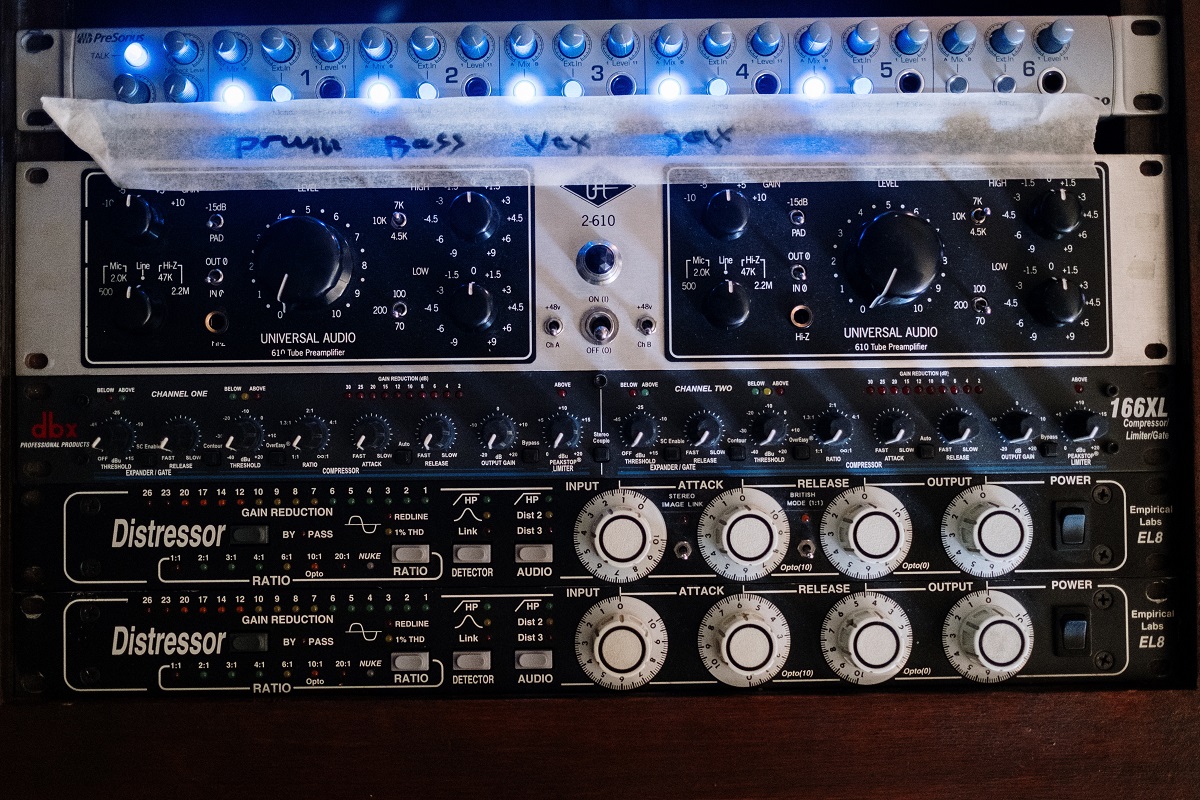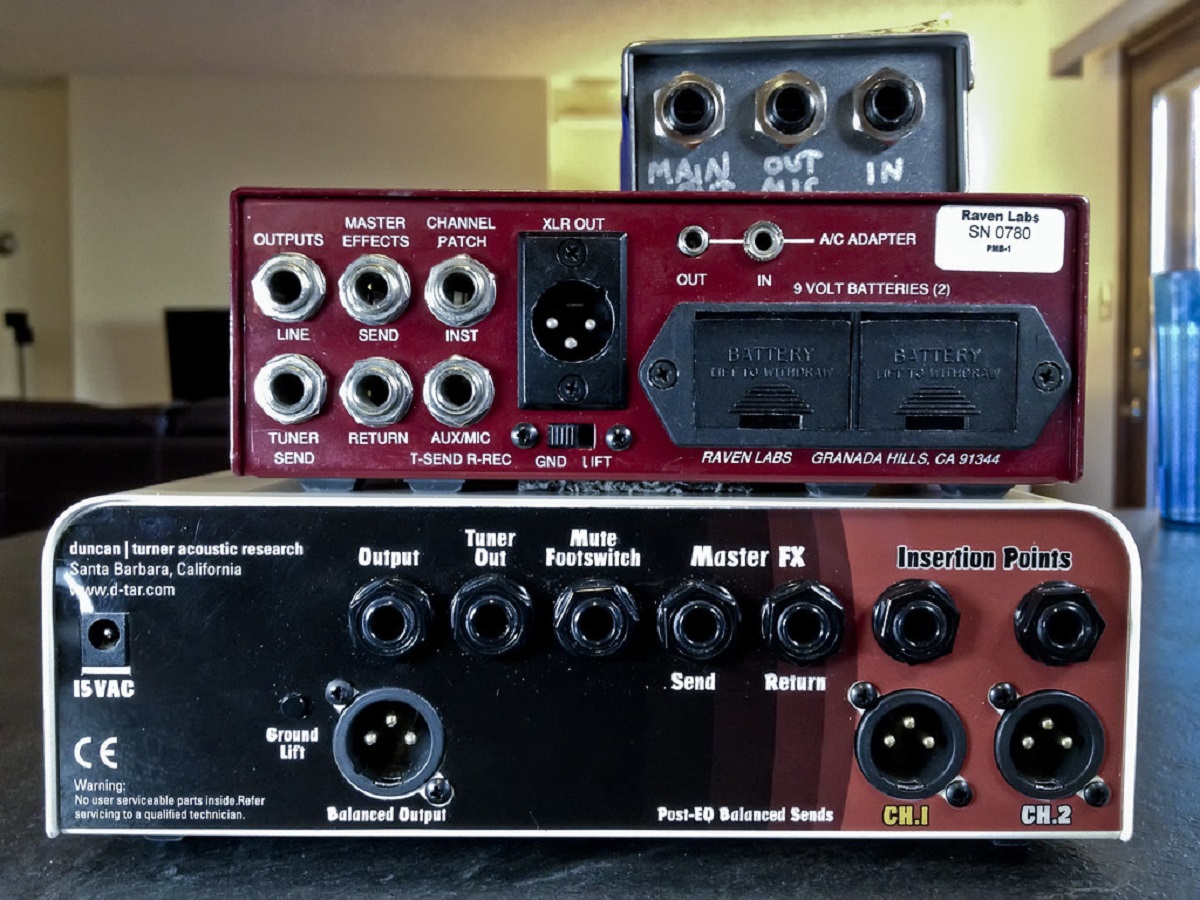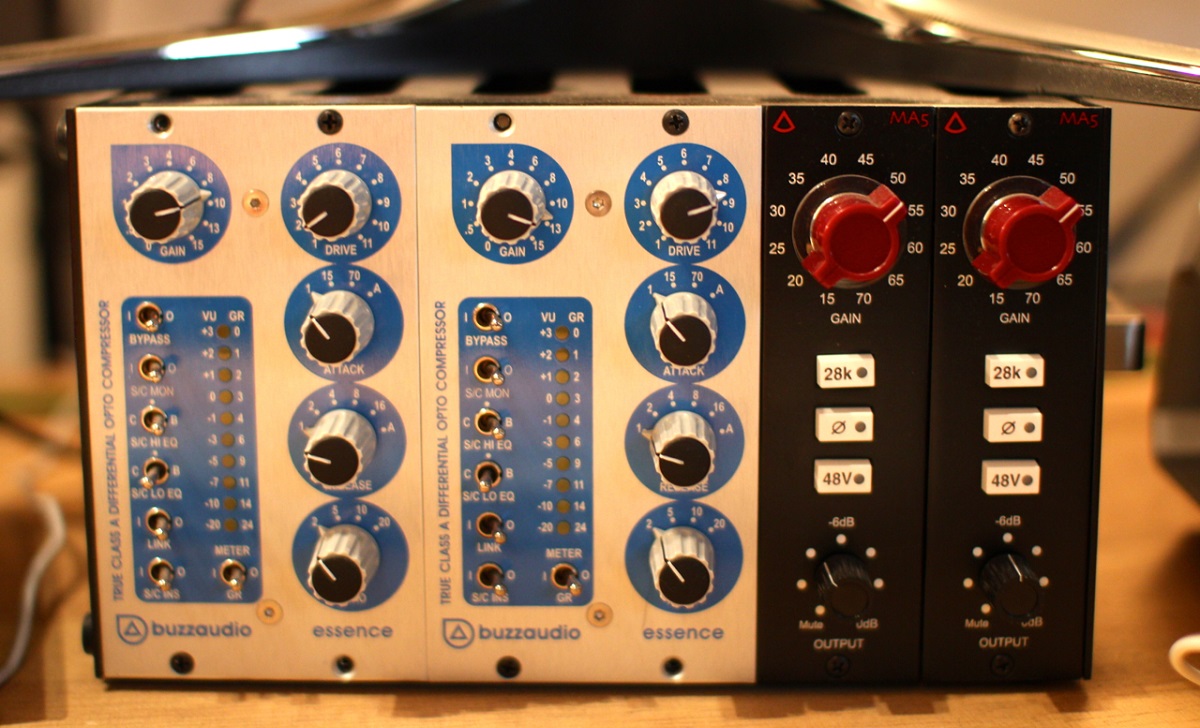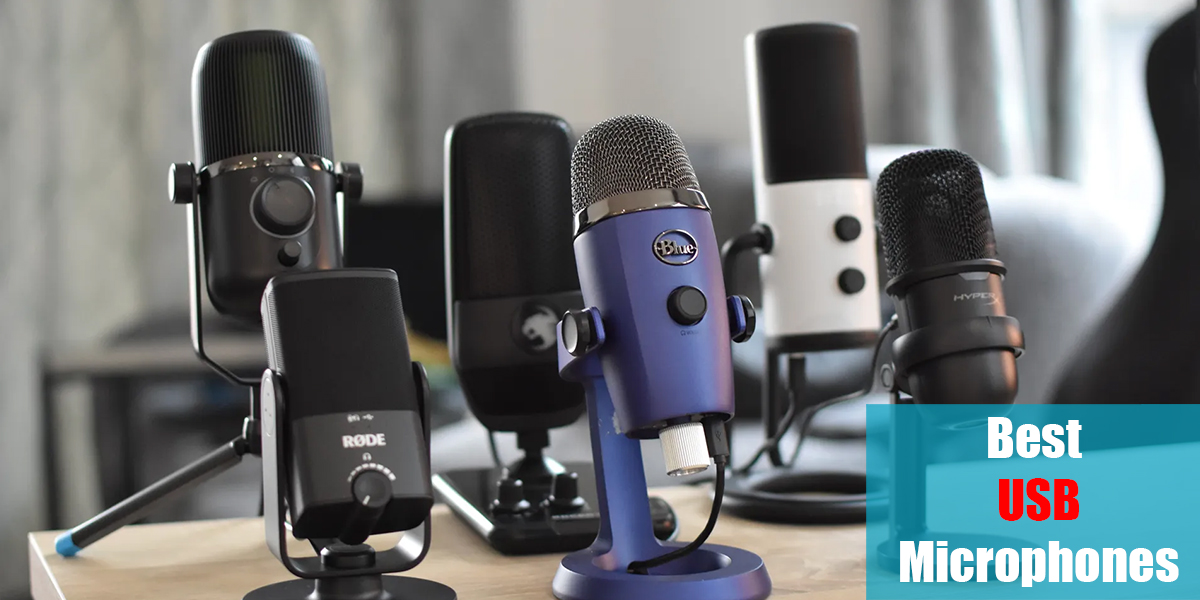Types of Microphone Preamps
Introduction
As a passionate audio engineer, I’ve always believed that a microphone preamp is like the secret ingredient that brings out the true magic in a recording. But with so many different types of preamps out there, it can be overwhelming to know which one is best for you.
That’s why I’ve created this ultimate guide to mic preamps, where we’ll dive deep into the various types and uncover the secrets to achieving the ultimate sound quality. So, let’s embark on this innovative journey together!
What Is a Mic Preamp?
A mic preamp, short for microphone preamplifier, is an essential component in the audio recording chain. It amplifies the weak electrical signal produced by a microphone, bringing it up to a level that can be processed and recorded.
Mic preamplifiers play a crucial role in capturing clear and detailed audio, ensuring optimal signal quality, and minimizing noise and distortion.
Definition of a Mic Preamp
I’ve always appreciated the versatility of a good mic preamp. A microphone preamp, or mic preamp, is an essential component in the audio chain that amplifies the microphone signal to a level suitable for processing or recording.
The design of a mic preamp plays a crucial role in capturing the true essence of the mic signal and shaping the overall sound. There are various types of preamps available, each with its own unique characteristics and sonic qualities. Some preamps are known for their transparency and accuracy, while others offer a warm and vintage tone.
Additionally, preamp input impedance is an important consideration as it affects the interaction between the mic and preamp, influencing the overall sound and performance.
Importance of Mic Preamps in Recording
In my experience, the quality and functionality of mic preamps are vital for achieving professional and pristine recordings. They amplify the weak microphone signals to a line level suitable for recording or further processing. A high-quality mic preamp can enhance the clarity and detail of the recorded sound, capturing the nuances of the performance accurately.
It’s especially important when working with sensitive microphones like ribbon microphones, which require extra amplification due to their lower output levels. Mic preamps can be found in dedicated units or integrated within audio interfaces.
Choosing the right mic preamp for your recording studio setup is essential for achieving superior sound quality and capturing every subtlety of your recordings.

When Do You Need a Microphone Preamp?
The need for a microphone preamp arises when you want to enhance the audio quality of your recordings. If you’re using an audio interface with built-in preamps, a dedicated external preamp can provide better preamp gain control, improved sound clarity, and reduced noise levels.
Choosing the right preamp for your specific recording needs can greatly impact the overall quality of your audio productions.
Audios Interfaces and Built-in Preamps
I have found that using audio interfaces with built-in preamps can greatly enhance the quality of my recordings. These preamps, whether they’re tube or solid-state preamp types, play a crucial role in capturing the true essence of my voice or instrument.
Here are some key benefits of using audio interfaces with built-in preamps:
- Convenience: With a built-in preamp, I no longer need to invest in an external mic preamp, saving both money and space in my setup.
- Versatility: Audio interfaces with built-in preamps often feature multiple inputs, allowing me to record multiple sources simultaneously.
- Quality: Many audio interfaces now offer high-quality built-in preamps that rival standalone preamps, ensuring pristine recordings.
- Portability: Built-in preamps make my setup more portable, allowing me to record on-the-go without sacrificing audio quality.
Overall, using audio interfaces with built-in preamps has revolutionized my recording process, offering convenience, versatility, quality, and portability in one compact package.
Advantages of External Mic Preamps
Although I prefer using audio interfaces with built-in preamps, there are times when having an external mic preamp can provide even greater control and flexibility in shaping the sound of my recordings.
External microphone preamplifiers, or mic preamps, offer several advantages that make them a valuable addition to any recording setup. Firstly, they allow for precise gain control, enabling me to achieve optimal recording levels and prevent distortion.
Additionally, external mic preamps often have a wider frequency response and lower noise floor compared to built-in preamps, resulting in cleaner and more detailed recordings.
Furthermore, using external preamps opens up a world of possibilities for preamp combinations, allowing me to experiment with different sonic characteristics and tailor the sound to my liking.
Types of Microphone Preamps
There are various types of microphone preamps available in the market today. Some popular options include vacuum tube preamps, solid-state preamps, and hybrid preamps.
Each type has its own unique characteristics and advantages, making it important to understand the differences between them.
Let’s explore these different types of microphone preamps and how they can enhance your audio recording experience.
Vacuum Tube Preamps
Using a vacuum tube preamp can add warmth and depth to your recordings. This type of preamp, also known as a tube mic pre, utilizes vacuum tubes to amplify the microphone input signal. The use of vacuum tubes in the signal path introduces harmonic distortion, which can result in a pleasing and vintage sound.
Here are some key benefits of using a vacuum tube preamp:
- Increased warmth and richness in the audio signal
- Enhanced depth and dimensionality in recordings
- Adds a vintage and classic character to the sound
- Smooth and natural saturation that enhances vocals and instruments
Overall, the use of a vacuum tube preamp can greatly enhance the quality and character of your recordings. By harnessing the unique qualities that this type of preamp produces, you can achieve a professional and innovative sound that stands out from the crowd.
Solid-State Preamps
I prefer the clarity and precision of solid-state preamps for recording vocals. Solid-state microphone preamps are an essential component in any recording setup. They’re known for their pristine sound quality and low-noise floor, making them ideal for capturing the nuances of a vocal performance.
Unlike other types of mic preamp designs, solid-state preamps offer a transparent and accurate representation of the original sound source. They provide a clean, uncolored signal that’s perfect for capturing the true essence of the voice.
With the wide variety of preamps available on the market, it’s important to choose the best microphone preamps that suit your needs. Whether you’re a professional recording engineer or a home studio enthusiast, solid-state preamps can be found in many different preamp designs, offering a range of features and price points.
When choosing a preamp, consider factors such as gain range, signal-to-noise ratio, and overall sound quality to ensure you get the best results for your vocal recordings.
Hybrid Preamps
I’ve heard that hybrid preamps combine the warm, vintage sound of tube preamps with the clean, transparent sound of solid-state preamps. As a musician and audio enthusiast, I’m always on the hunt for the best microphone preamp to enhance my recordings. Hybrid preamps offer a unique blend of characteristics that make them an intriguing option. Here are some key points to consider:
- Seamless integration: Hybrid preamps seamlessly combine the best features of tube and solid-state designs, allowing for a versatile and flexible sound.
- Enhanced clarity: The solid-state portion of the hybrid preamp ensures clean and transparent sound reproduction, perfect for capturing the nuances of a condenser microphone.
- Vintage warmth: The tube section of the hybrid preamp imparts a warm and pleasing sonic character, ideal for adding depth and richness to recordings, especially when using a ribbon mic.
- Standalone versatility: Hybrid preamps can function as standalone preamps, allowing for easy integration into any recording setup, whether in a studio or a live environment.
With their ability to deliver both vintage warmth and modern clarity, hybrid preamps offer a compelling option for those seeking innovation in mic preamp designs.
Microphone Preamps
During my research on microphone preamps, I discovered that certain models have built-in digital converters, which can greatly improve the audio quality of recordings.
Microphone preamps are essential devices that amplify the weak signal from microphones to a level suitable for recording or live sound applications. They come in different types, such as tube preamps, solid-state preamps, and hybrid preamps that combine the best of both worlds. These preamps offer various features and functionalities, including multiple mic inputs, flexible EQ options, and even built-in effects.
A single-channel preamp, for instance, is perfect for recording with a single microphone, providing excellent signal amplification and control. Additionally, some microphone preamps can also convert the mic level signal to a line level signal, allowing direct connection to mixers or audio interfaces.
It’s worth noting that preamps generate a significant impact on the overall sound quality, making them a crucial component in any audio recording setup.
Instrument Preamps
One of the advantages of instrument preamps is their ability to enhance the tonal characteristics of guitars and other musical instruments. This type of preamp is designed specifically for instruments and offers several benefits for musicians and sound engineers.
- Improved Sound Quality: Instrument preamps can enhance the audio signal from the instrument, resulting in a cleaner and more defined sound.
- Versatility: Preamps are available in various models and designs, allowing musicians to choose the one that suits their specific needs and preferences.
- Gain Control: A preamp boasts gain control features, allowing users to adjust the input level of the instrument and achieve the desired sound.
- Effects Integration: Many instrument preamps come with built-in effects processors, giving musicians the ability to add effects like reverb or distortion to their sound.
Overall, an instrument preamp is often used to amplify the mic or pickup signal from the instrument and provide additional control over the sound. With its ability to improve tonal characteristics and offer various features, a preamp can add depth and creativity to a musician’s performance.

Do Microphone Preamps Reduce Noise?
Yes, microphone preamps play a crucial role in reducing noise. They’re designed to amplify the weak microphone signals while minimizing the introduction of additional noise.
The noise reduction capabilities of preamps depend on various factors such as the quality of the preamp circuitry, the signal-to-noise ratio, and the input impedance.
The Role of Preamps in Noise Reduction
I believe that using a high-quality preamp can significantly reduce the noise in my recordings. Here’s why:
- Preamps are devices that amplify the microphone signal before it reaches the recording equipment. They often have adjustable gain controls and can shape the sound.
- By using a high-quality preamp, I can ensure that the microphone signal is amplified cleanly and accurately, minimizing noise and distortion.
- A preamp is one of the key components in a recording chain that can affect the overall quality of the recording. Investing in a good preamp can make a noticeable difference in the clarity and fidelity of the audio.
- In addition to reducing noise, preamps can provide additional features such as phantom power for condenser microphones or instrument inputs for direct recording.
It’s important to note that not all preamps are created equal. Some preamps use transistors, while others utilize tubes for a different tonal character. Understanding the role of preamps in noise reduction can help me make informed decisions when it comes to selecting the right equipment for my recording needs.
Factors That Influence Noise Reduction
There are several factors that can influence noise reduction, but using a high-quality preamp is one effective way to minimize unwanted noise in recordings.
When it comes to choosing a preamp, it’s crucial to consider the type of microphone you’re using. For instance, a solid-state microphone requires a preamp that can handle its specific characteristics.
Additionally, a rack-mounted microphone preamp offers convenience and flexibility, as it can be easily integrated into your existing setup.
Some preamps also provide dedicated features for reducing noise, such as built-in noise gates or filters. It’s important to note that not all preamps offer the same level of noise reduction, so it’s essential to research and compare different preamp models before making a decision.
Frequently Asked Questions
Q: What are mic preamps?
A: Mic preamps, also known as microphone preamplifiers, are devices used to amplify the weak signals sent by microphones before they are sent to audio interfaces or recording studios. They are essential for bringing out the best in microphone recordings.
Q: What is the purpose of mic preamps?
A: The main purpose of mic preamps is to amplify the low-level signals produced by microphones. This amplification allows the signals to be processed and recorded accurately without introducing noise or distortion.
Q: What is the difference between built-in preamps and external preamps?
A: Built-in preamps are preamps that are integrated into audio interfaces or recording devices, while external preamps are separate units that can be connected to these devices. External preamps are often preferred by recording professionals for their higher quality and flexibility.
Q: What are tube preamps?
A: Tube preamps, also known as valve preamps, use vacuum tubes to amplify microphone signals. They are known for their warm and vintage sound, which can add depth and character to recordings.
Q: What are solid-state preamps?
A: Solid-state preamps use transistors and other solid-state components to amplify microphone signals. They are known for their clean and transparent sound, making them suitable for capturing accurate and detailed recordings.
Q: What are the best mic preamps?
A: The best mic preamps depend on individual preferences and requirements. Popular choices among professionals include the Neve 1073 preamp, the 610 tube preamp, and various other high-quality preamp models from reputable brands.
Q: What is the difference between different preamps?
A: Different preamps can vary in terms of their sound characteristics, gain levels, input impedance, and other features. Understanding these differences can help you choose a preamp that suits your specific needs and desired sound.
Q: Can preamps affect the sound of a microphone recording?
A: Yes, preamps can impart their own unique sonic characteristics to microphone recordings. Tube preamps, for example, are known for their warm and vintage sound, while solid-state preamps provide a clean and transparent sound.
Q: Why would I want a preamp if I can plug a microphone directly into an audio interface?
A: While it is possible to directly connect a microphone to an audio interface without a preamp, using a preamp can provide better control over the gain levels and sound quality of the recording. Preamps can also enhance the overall sound by adding color and character.
Q: What is the difference between mic level and line level?
A: Mic level refers to the voltage level of the weak signals produced by microphones, while line level refers to the higher voltage level used for professional audio equipment. Preamps are designed to amplify mic-level signals to line-level signals, making them compatible with audio interfaces and other recording devices.

Conclusion
Well, after diving into the world of microphone preamps, it’s safe to say that they’re an essential tool for any serious audio enthusiast. Whether you’re a professional musician or just a passionate podcaster, the right mic preamp can make all the difference in capturing crisp, clear sound.
From tube preamps to solid-state options, there’s a wide range of choices to suit every preference. And while mic preamps may not directly reduce noise, they certainly play a crucial role in maintaining signal integrity and ensuring top-notch audio quality.
So, go ahead and take your recordings to the next level with a quality mic preamp!







